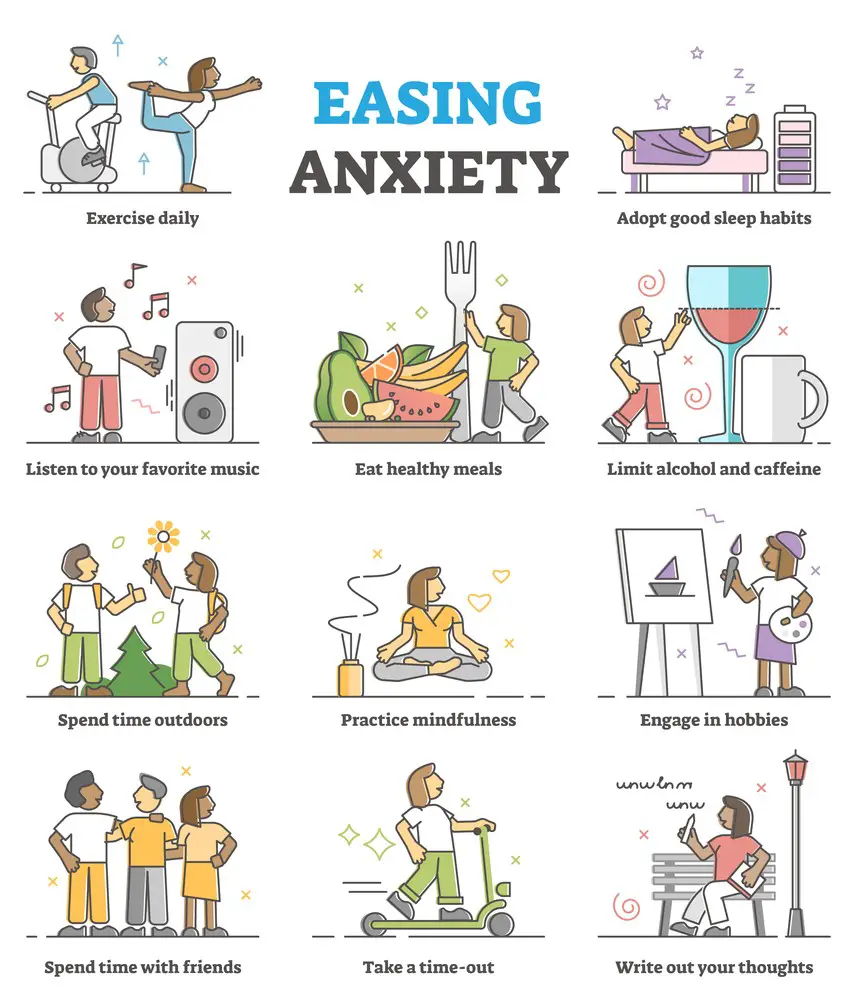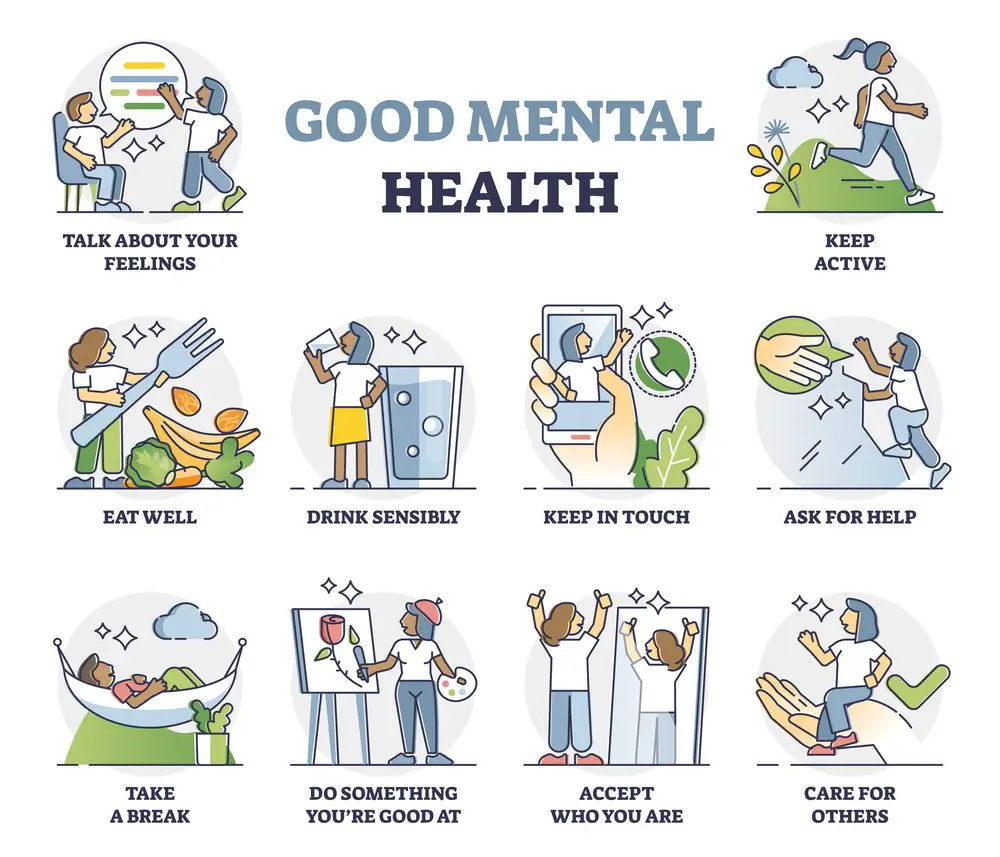As a BetterHelp affiliate, we receive compensation from BetterHelp if you purchase products or services through the links provided
Navigating the blurred lines between everyday worry and clinical anxiety can be challenging. That’s why we’ve tapped into the expertise of five professionals, from a seasoned psychiatrist to a savvy business psychologist. They’ll guide you through key areas like daily symptom assessment and identifying your fight, flight or freeze response, shedding light on this crucial mental health aspect.
- Assess the Symptoms Daily
- Consider the Duration of Worry
- Evaluate the Impact on Functionality
- Examine the Effect on Daily Activities
- Identify Fight, Flight, or Freeze Response

1. Assess the Symptoms Daily
The best way to differentiate between “normal worry” and “anxiety that needs treatment” is to look at the symptoms and determine how they affect your daily living. If you find that anxiety is disrupting your day-to-day functioning, it is recommended that you seek treatment.
Anxiety often attacks sleep. It can appear as ruminating thoughts that make it hard to “turn off your brain,” or it may cause fragmented sleep throughout the night. Poor sleep patterns will then lead to suboptimal functioning during the day. Medications and psychotherapy can often provide relief from anxiety.
Kara Keuthan Beatty, Md, Psychiatrist, Resilience Health
2. Consider the Duration of Worry
How long the worry lasts differentiates between “normal worry” and anxiety. For example, are you fixated on the worry? Does your heart race? Are you having panic attacks or unable to attend events or function daily because of your worry? These are all signs that your worry may require the help of a mental health professional.
Azmaira Maker, Ph.D., Founding Director, Aspiring Families
3. Evaluate the Impact on Functionality
“Normal worry” can be found as a normative response to specific stressors; this is adaptive because it signals our fight-or-flight system, motivating us to react in these situations.
On the other hand, anxiety that may require psychotherapy is often pervasive and debilitating to one’s functionality, affecting one’s social, occupational, and educational domains. Understanding the intensity of one’s worries is critical in learning how to navigate this anxiety best.
Taylor Chodash, Mental Health Counselor, LP

4. Examine the Effect on Daily Activities
A critical factor in distinguishing both is their impact on one’s daily life. Normal worry can be consuming, but it’s often temporary and manageable. It doesn’t significantly impede your ability to work, socialize, or carry out daily tasks.
Anxiety that might need treatment is persistent and can significantly limit a person’s daily activities and overall quality of life. It’s like a constant background noise that doesn’t just fade away and can lead to physical symptoms, making simple tasks sometimes feel impossible.
Bayu Prihandito, Certified Psychology Expert, Life Coach, and Founder, Life Architekture
5. Identify Fight, Flight, or Freeze Response
The best way to differentiate between everyday worrying and clinical anxiety is to activate the fight, flight or freeze response.
When we worry about something specific, “what ifs” often consume our thoughts.” We ask ourselves, “What if something goes wrong, breaks, fails, or some other negative outcome?” These thoughts occupy our minds, but ultimately, we focus on the topic.
Anxiety, sheer terror, and panic grip you; all you can think about is fighting, running away, or freezing on the spot. You often forget entirely the initial trigger, as basic survival has become the priority.
For those who have experienced true anxiety, especially those who suffer panic attacks, the feeling is markedly different from normal worrying. Put simply, if you find yourself entering survival mode, then it’s genuine anxiety you are experiencing, and you should consider seeking support.
Ben Schwencke, Business Psychologist, Test Partnership
Expert Tips for Taking Action: Your Next Steps in Identifying Anxiety
If you’ve ever wondered, “Is this worry or anxiety?” you’re not alone. Our experts have some actionable tips to help you understand your feelings.
- Keep a Worry Journal: Kara Keuthan Beatty suggests daily recording your symptoms and triggers. This data can illuminate when trying to understand your emotional state.
- Deep Breathing Exercises: Azmaira Maker recommends deep breathing as a first step in assessing the duration and intensity of your worry. It might be a normal worry if the symptoms subside with relaxation techniques.
- Self-Check Functionality: Taylor Chodash advises a quick self-check. Are your symptoms interfering with your work or social life? This is a reliable yardstick to gauge if you need professional help.
- Prioritize Tasks: Bayu Prihandito suggests listing your daily tasks and rating them based on how anxiety affects your ability to complete them. This can give you a snapshot of the practical impact of your symptoms.
- Assess Physical Reactions: Ben Schwencke notes that a physical response like fight, flight, or freeze is a tell-tale sign. Monitor these responses as they can help you differentiate between normal worry and clinical anxiety.
 Beyond the Line: When Treatment is Needed, Goal Setting and Monitoring Progress
Beyond the Line: When Treatment is Needed, Goal Setting and Monitoring Progress
Signs You May Need Treatment
- Pervasive Worry: If worry seeps into every facet of your life, it’s a red flag.
- Physical Symptoms: Chronic tension, sleep disruption, or even gastrointestinal issues are signs to watch for.
- Emotional Toll: A constant state of worry or dread that’s hard to shake could signify that professional help is needed.
Setting Goals for Treatment
- Immediate Goals: Aim for short-term improvements like better sleep, reduced physical symptoms, or improved focus.
- Mid-Term Goals: Think about behavioral adjustments, like how to cope in triggering situations.
- Long-Term Goals: Ultimately, the aim is a sustainable improvement in your quality of life. Discuss with your healthcare provider how to best measure this over time.
Monitoring Progress
- Regular Check-Ins: Most professionals will incorporate regular check-ins into your treatment plan to assess progress.
- Adjusting Strategy: If some goals aren’t met, your treatment plan may need to be adjusted. Be open to this flexibility.
- Celebrate Wins: Every small improvement is a step in the right direction. Celebrate these milestones as encouragement for the ongoing journey.
Understanding the nuances between normal worry and anxiety that need treatment can be complex, but it’s crucial for your mental well-being. With expert advice to guide you and clear goals to strive for, you can be more proactive in managing your mental health.
Frequently Asked Questions

What is the primary difference between worry and anxiety?
Worry usually responds to a specific, identifiable concern and tends to be temporary. Anxiety is more pervasive and generalized, and can be triggered even when there’s no identifiable cause.
How do I know if my worry is becoming anxiety?
If your worry affects multiple aspects of your life, persists for an extended period, or leads to physical symptoms like sleep disruption, you may be experiencing anxiety.
Can deep breathing exercises really help?
Yes, according to Azmaira Maker, Ph.D. Deep breathing can help relax your nervous system and be a useful tool to differentiate between normal worry and more severe anxiety.
What should my first step be if I think I need treatment?
If you need treatment, the first step is to consult a healthcare provider for an official diagnosis and treatment options.
How often should I assess my symptoms?
Kara Keuthan Beatty recommends daily assessments, especially if you’re experiencing changes in your mood or behavior. Tracking your symptoms can provide valuable data for healthcare providers.
What does ‘impact on functionality’ mean?
Taylor Chodash explains that this refers to how your symptoms affect your daily life, including work, social interactions, and basic tasks like eating or sleeping.
Are there different types of anxiety?
Yes, there are several types of anxiety disorders, including Generalized Anxiety Disorder (GAD), Social Anxiety Disorder, and specific phobias.
How do I set goals for treatment?
Setting goals is an individual process but should include immediate, mid-term, and long-term objectives. Discuss these with your healthcare provider for a tailored approach.
What should I do if I’m not making progress in treatment?
Monitoring progress is crucial. If your current treatment isn’t working, consult your healthcare provider to adjust your treatment plan.
About Jacob Maslow
After surviving the traumatizing events of 9/11, I took it upon myself to heal through helping others. I’m the primary caregiver of my children and understand from first-hand experience the lonely paths you have to walk as a partner and parent when leaving an unhealthy relationship.
We’re all echoing in a dark space that doesn’t have to be this empty, and that’s been my mission since finding solace and recovery in therapy: To help comfort others who are still in shock and at the prime of their struggle.
I came across BetterHelp after searching for this type of community. I wanted to belong to a body of proactive therapists and supportive therapy veterans that allowed me to see other sides of the story.
It was unconventional, and that’s what attracted me most. During my most challenging times, when my ex-wife completely cut me off from my children, I found comfort and clarity through BetterHelp.
Instead of being chained to a strict therapist recommendation, I was in charge of who I felt understood my struggle most. That allowed me to find my true peace, as I was reunited with those who read behind my words and had first-hand experience with my trauma.
Recovery is a choice; with BetterHelp, that choice will be a few clicks away. You can join their Christian-oriented platform, Faithful Counseling, for those with family estrangement and toxic relationship patterns.
- Breaking the Silence: Why Men’s Mental Health Matters More Than Ever - April 15, 2025
- How to Transform a Home’s Patio Space into a Relaxing Space - March 23, 2025
- 5 Strategies to Use a Cell Phone to Help Manage Your Stress - March 23, 2025
This site contains affiliate links to products. We will receive a commission for purchases made through these links.


 Beyond the Line: When Treatment is Needed, Goal Setting and Monitoring Progress
Beyond the Line: When Treatment is Needed, Goal Setting and Monitoring Progress
